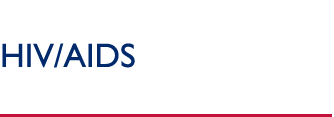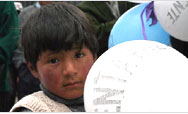HIV/AIDS:
Frequently Asked Questions
General HIV/AIDS Questions
Funding Questions
How
many people around the world are living with HIV/AIDS?
In 2004, 39.4 million people
around the world were living with HIV/AIDS. More than
64.9 million people have been infected with HIV since the
pandemic began. AIDS is the leading
cause of death in Sub-Saharan Africa, and the fourth leading
cause of death globally.
How many
women are infected with HIV/AIDS?
Globally, 45 percent of adults living with HIV/AIDS are
women. By region, this percentage varies considerably,
from 57% in Sub-Saharan Africa, to 28% in East Asia and
the Pacific. In 2004, 17.6 million women were living with
HIV/AIDS worldwide.
How many
people have died of AIDS?
Almost 8,500 people die every day due to AIDS. AIDS caused
3.1 million deaths
in 2004, 510,000 among children
under 15. An estimated 32 million people have died from
AIDS since the beginning of the pandemic.
How fast
is the pandemic growing?
There were 4.9 million new
HIV infections in 2004, or almost 13,500
people per day.
How many
children and young people are infected with HIV?
In 2004, 640,000 children under 15 were newly infected with
HIV, bringing the total number of children living with HIV
to 2.2 million. About half of all new adult HIV infections
occur among 15-24 year olds. Learn more about USAID's efforts
to prevent HIV in children and young people:
How many children
have been orphaned because of HIV/AIDS?
As of 2003, approximately 15 million children have lost one or both parents
due to HIV/AIDS. By 2010, this number is expected to increase
to 25 million. Learn more about USAID's
efforts to improve the lives of children affected by HIV/AIDS.
Which parts of the world are most
severely affected by HIV/AIDS?
Approximately 95 percent of people
living with HIV/AIDS live in developing countries. Sub-Saharan Africa is the hardest-hit
region, but other regions face severe or rapidly
growing epidemics in specific countries or areas.
Parts of
Asia and Latin America are experiencing severe epidemics
at
the national or local level. Eastern Europe and Central
Asia is the region with the fastest growing HIV/AIDS
epidemic in the world. Learn more about USAID's
country and regional HIV/AIDS programs.
Learn
more about the AIDS epidemic from UNAIDS.
|


